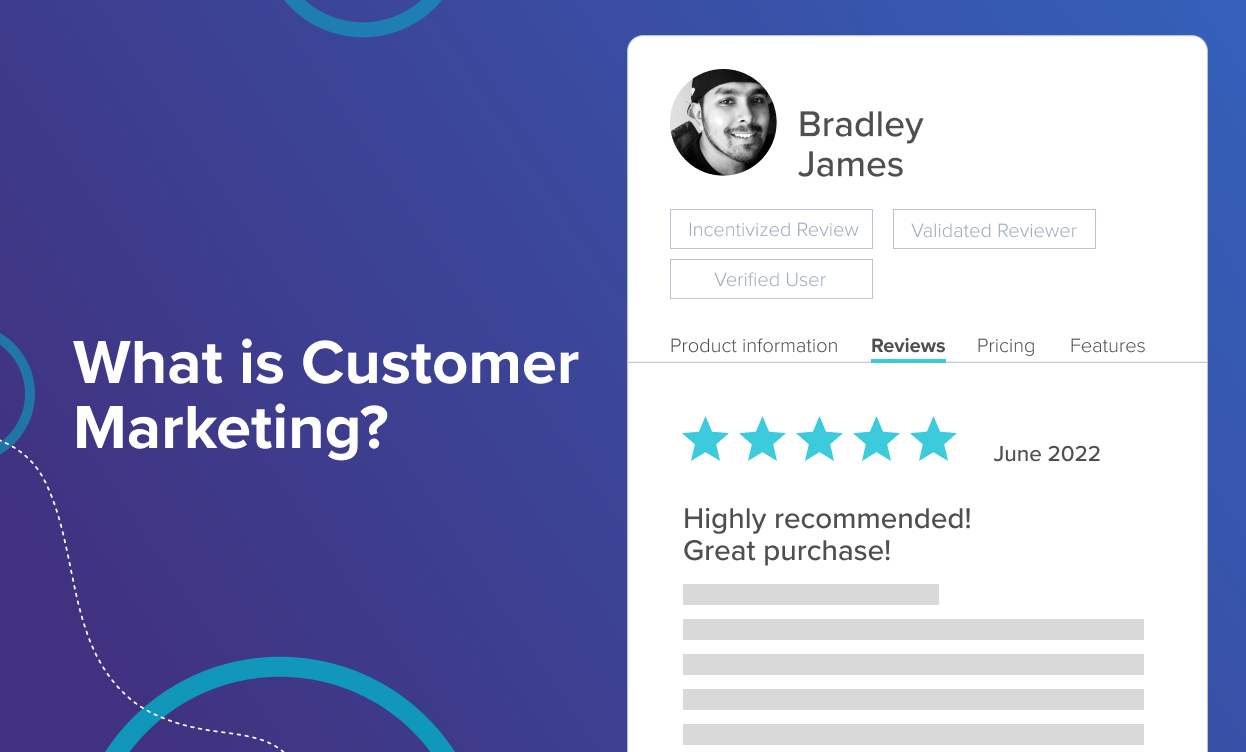Customer marketing is rapidly becoming a critical function in many companies across different industries. But what is customer marketing?
Well, it is not just about ‘marketing to your existing customers.’
As UserTesting’s VP of Customer Marketing, Sterling Jackson, put it “Customer marketing has expanded to include a much broader set of programs to drive customer renewal, engagement and advocacy.”
In other words, it’s not just about messaging.
Rather, customer marketing is about creating an experience that informs, engages and excites your customers about your product and brand. The goal isn’t to ‘market to your customers,’ but instead, to make them feel that you value them and their business.
A successful program will unleash a wellspring of revenue growth and brand amplification. Let’s go over what you need to know about customer marketing using the insights of our own customers.
What is Customer Marketing?
Customer marketing is to market to your existing customers with the goal of encouraging renewals and driving upsells/cross-sells.
However, this definition doesn’t nearly capture the true scope of customer marketing, much less why it’s actually a key part of your overarching business goals.
In truth, customer marketing involves building a positive experience for your customers. That can only happen when your customer success, customer service, product, and other key teams are on board as they all impact customer experience.
Finally, there’s the aspect of reinforcing your relationship with your customers. You do this by building trust, forging personal relationships with the people using your products, and inviting a more collaborative experience where customers have input.
In a roundtable with us, UserTesting VP of Customer Marketing, Sterling Jackson, said, “Customer marketing has expanded to include a much broader set of programs to drive customer renewal, engagement and advocacy.”
In a way, to succeed, you need to break somewhat from traditional marketing thinking. Customer marketing isn’t really about what you tell customers.
Rather, it seeks to connect the buyer and customer into one seamless and positive brand experience that ultimately leads to loyalty and advocacy.
Why is Customer Marketing Important?
Let’s step back a bit.
Why would you even want to focus on your existing customers? Well, acquiring a new customer costs nearly 5X as much as retaining one. But if you increase your retention rate by just 5%, you can improve your profits by 25-95% (Source: Outbound Engine).
The cost per acquisition for a new customer is going up. Not only that, but competition is also increasing. So, retaining customers isn’t just a ticket for growth, but it’s foundational. If your bucket is always leaking, you’ll never upgrade to a bigger bucket because you’re not retaining enough to warrant growth.
How does that work?
On one level, a fully engaged and enthusiastic customer will stay. They’re getting everything they want (and more) from being your customer. Your competitors will have a lot of difficulty prying them away and, in turn, this helps you push your rivals to the outer edge of the market.
On another level, an engaged and loyal customer is more likely to hear about and explore your upsell and cross-sell offers.
But there’s still yet another level. That customer could start advocating for your brand to their own networks. They might provide authentic reviews on third-party websites and platforms like G2 and TrustRadius. Your customers could also send referrals, which are your best marketing leads as they drive down the customer acquisition cost and close the fastest.
It’s no surprise then that 98% of executives consider customer marketing to be an important or very important piece to their organization’s success.
Benefits of Customer Marketing

We mentioned earlier how a 5% increase in retention can result in a minimum profit increase of 25% (and potentially go up to 95%). Well, how does that happen? Here’s a breakdown of a few key benefits of customer marketing:
Drive Customer Renewals & Retention
When customers feel like you value them and their business, they’ll likely want to stay with your brand.
According to the 5th edition of Salesforce’s State of Marketing report, 80% of customers say that the experience a company provides is as important as its products and services.
You can impact the CX side by involving the relevant teams in your customer marketing efforts.
For example, you can empower the customer’s voice by connecting them to the product team. You can do this through a community where the customer provides direct feedback to the product team. If you “close the feedback loop” by showing the customer how they shaped or improved the product, they’ll feel involved and heard. This is a positive customer experience.
Create Upsell & Cross-Sell Opportunities
The same Microsoft study we cited above found that loyal customers are 7X likelier to try a new product or service.
Build Customer Relationships
Strong customer relationships help drive loyalty and engagement. This translates into renewals and cross-sells and upsells, i.e. more profit for your business . But relationships are also key for creating active brand advocates. Your customers will promote your brand to their peers and audiences, attracting new customers through social media and other channels.
Earn Referrals
According to Microsoft, customers that are pleased with the customer experience are 4X likelier to refer. Like our first point, customer experience plays a key role, so it needs to be a focus point for your customer marketing program.
Reduce Revenue Loss
According to Callminer’s 2020 Churn Index, unplanned churn cost companies $35.3 billion.
Basically, a strong marketing strategy will focus on improving the customer experience with advocacy and community. They will also nurture loyalty programs that enable scalable customer feedback, precise customer segmentation and highly personalized messaging.
Generate Reviews and Testimonials
Reviews and testimonials are hugely important. As third-party validation, they serve as social proof for your brand, products and services.
For example, 92% of customers say they read online reviews before buying. Moreover, 88% of consumers rate online reviews and testimonials as trustworthy as recommendations from both friends and family.
In terms of B2B, 97% of customers said that testimonials and recommendations from peers are the most reliable forms of content.
Overall, reviews and testimonials have an impact on revenue. Strategic Factory found that customer testimonials can help drive up to 62% more revenue.
Accelerate Customer Advocacy
Finally, when taken together, all of these factors can result in a thriving customer advocacy program. In this state, your customers will promote and amplify your brand through their own voice to their audiences. In a time when people trust other people the most, brand advocacy from your customers, partners and employees is critical.
Next Steps: Build a Customer Marketing Strategy that Starts Small, But Dreams Big
At this point, your first instinct could be to build a customer marketing team. That’s a sensible first step, one that a growing number of companies are taking.
As we’ve seen, the broader definition of customer marketing today is tied to the full customer experience — spanning product, marketing, sales, customer success, support and beyond. But don’t worry! Even though the grand vision for a this program is large, you can (and should) start small by defining a strategy to mobilize your most passionate advocates.
Check out this webinar to learn more about it and kickstart your customer marketing strategy.










































